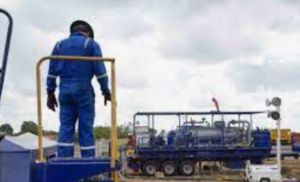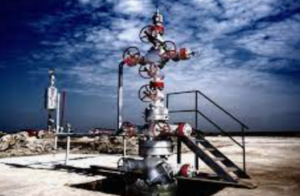The latest Baker Hughes rig count report has revealed a minor decline in the number of active oil and gas rigs across the U.S., a signal that the energy industry is continuing to navigate through fluctuating market conditions and shifting priorities. As of the most recent week, the total number of active rigs fell by two, bringing the national count to 585. While this change might seem small, it’s part of a broader trend that reflects how the industry is adjusting to current demands and opportunities.

A Closer Look at the Numbers
The report highlights a mix of changes across various states and sectors. The decline in the U.S. rig count included a drop of 5 oil rigs, bringing the total to 479. Meanwhile, gas rigs actually saw a modest uptick, increasing by 3 to a total of 102. However, this small overall reduction leaves the U.S. rig count 34 rigs below where it stood a year ago, with 18 fewer oil rigs and 16 fewer gas rigs compared to 2023.
Oklahoma’s oil and gas activity also saw a slight dip, with the state’s active rig count falling by one to 40. Still, this is an improvement from the 37 rigs reported one year ago, suggesting that Oklahoma is holding steady amid the broader national decline.
Regional Highlights
The changes in the rig count varied significantly across different oil-producing states. Here are some key highlights:
- Texas, the nation’s energy powerhouse, saw a slight increase of two rigs, bringing its total to 279, further cementing its status as the leading state in U.S. energy production.
- New Mexico, another major oil-producing state, experienced a more significant decline, with its rig count falling by three to 101.
- North Dakota maintained its position with 33 active rigs, unchanged from the previous week.
- Louisiana experienced a small drop, losing one rig to reach a total of 40.
In addition to the major oil-producing states, other areas saw more stability or even growth. Kansas added four rigs, bringing its total to 28, while Pennsylvania saw a small increase of one rig, reaching a total of 15. Meanwhile, states like Colorado, Utah, West Virginia, and Wyoming remained steady with no changes in their rig counts.
Offshore and National Trends
Offshore drilling also experienced a slight decline, with the number of rigs dropping by one to 18. This is part of the broader trend of fluctuating activity as the industry continues to adapt to both economic and environmental pressures.
The U.S. rig count is still recovering from the disruptions of the past few years, including the global energy crisis and fluctuating oil prices. As oil and gas companies continue to evaluate new investments and projects, the balance between supply and demand remains delicate.
What’s Driving the Numbers?
Several factors are influencing the current rig count:
- Geopolitical Tensions: Ongoing uncertainties around global oil and gas supplies, particularly due to geopolitical tensions, continue to create volatility in the market. This has a direct impact on rig activity, as producers balance their output with shifting global demand.
- Energy Transition: The increasing focus on renewable energy and decarbonization has led to a more cautious approach to new oil and gas projects. Many companies are being selective about where they invest, particularly as regulatory pressure mounts to reduce emissions and pursue cleaner energy alternatives.
- Market Prices: Oil prices remain a key determinant of rig activity. While prices have stabilized somewhat compared to the volatility of the past two years, producers remain cautious, adjusting their rig counts in response to both short-term market conditions and long-term forecasts.
Looking Ahead
The slight dip in the U.S. rig count reflects the ongoing balancing act that oil and gas producers face in today’s energy market. While some regions are seeing growth, others are scaling back, resulting in a complex patchwork of activity across the country. As we move toward 2025, the industry will continue to monitor market signals and adjust accordingly, especially with new LNG projects on the horizon and ongoing developments in the global geopolitical landscape.
The rig count may serve as an indicator of broader trends, but it’s clear that the future of oil and gas is in a state of flux. Producers are grappling with the need to secure energy supplies in the face of growing demand while also considering the transition to cleaner energy solutions. This delicate balance will likely continue to shape the industry’s trajectory in the coming years.
Stay tuned for further updates as the energy landscape continues to evolve.

















